Abstract
Hentges, David J. (Loyola University, Chicago, Ill.), and MacDonald Fulton. Ecological factors influencing the relationships between Klebsiella and Shigella in mixed cultures. J. Bacteriol. 87:527–535. 1964.—Viable-cell counts of Shigella flexneri and Klebsiella (Aerobacter aerogenes) in pure and mixed culture were made during growth under predetermined conditions of temperature, pH, oxygen supply, and nutrient supply. In pure culture, environmental changes had marked effects on the Shigella populations. Klebsiella populations were not affected except at 44 C or when aerated; under these conditions, the populations were smaller. In nonaerated mixed culture, under different conditions of temperature, pH, and nutrient supply, Klebsiella interfered with the multiplication of Shigella. Exponential growth of Shigella was interrupted at about the time Klebsiella populations attained a maximal size. In contrast, the presence of Klebsiella in an aerated mixture had little or no effect on Shigella multiplication because Klebsiella failed to attain a maximal population. Different environmental conditions resulted in different Klebsiella to Shigella ratios in mixed cultures. When conditions were favorable for Shigella multiplication, as shown by pure culture controls, the proportion of Shigella in the mixture was generally greater than when conditions were unfavorable.
Full text
PDF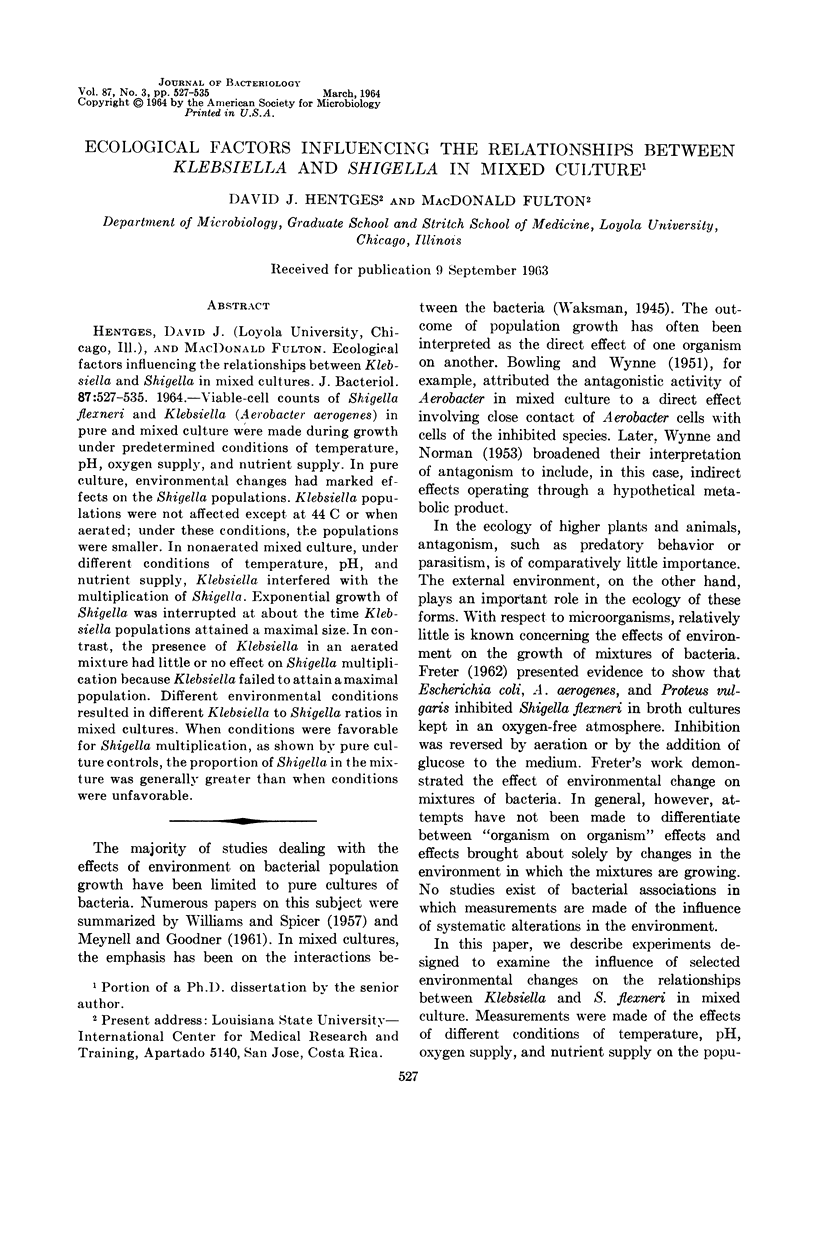
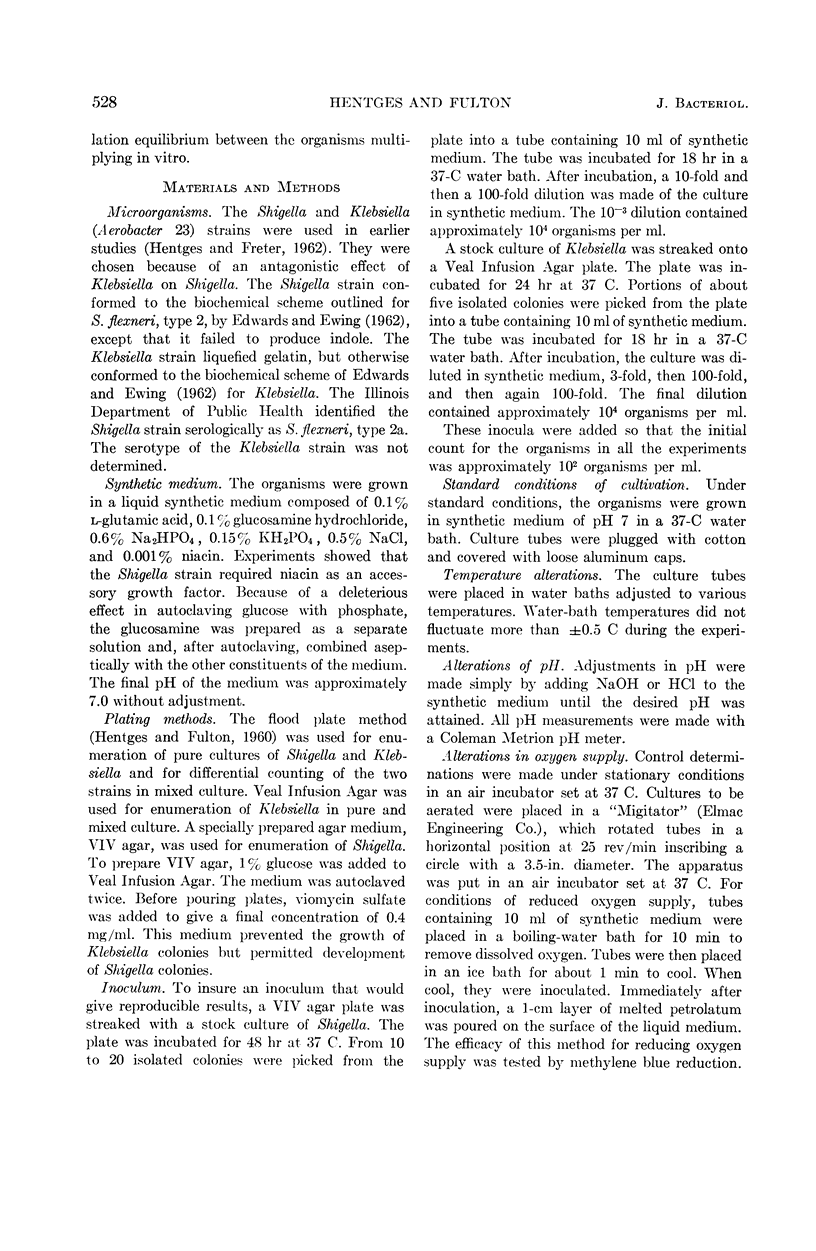
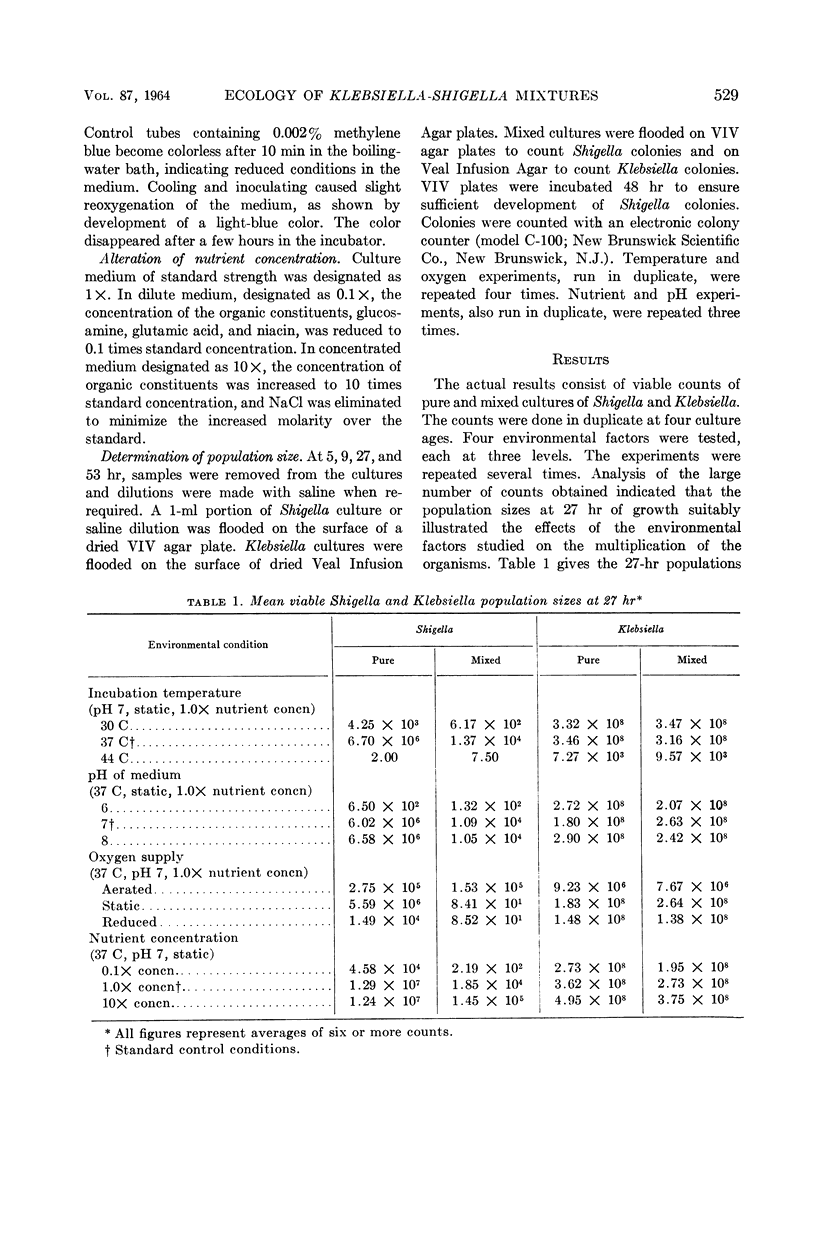
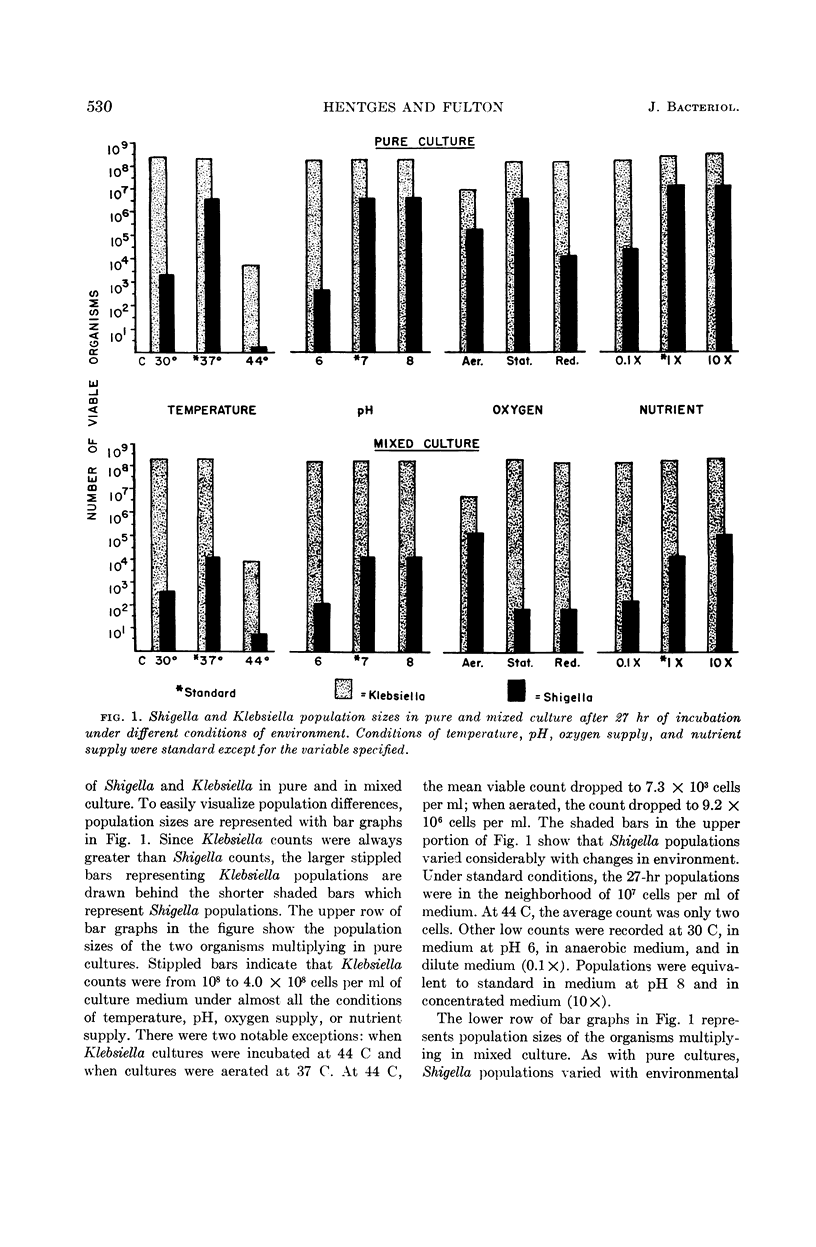
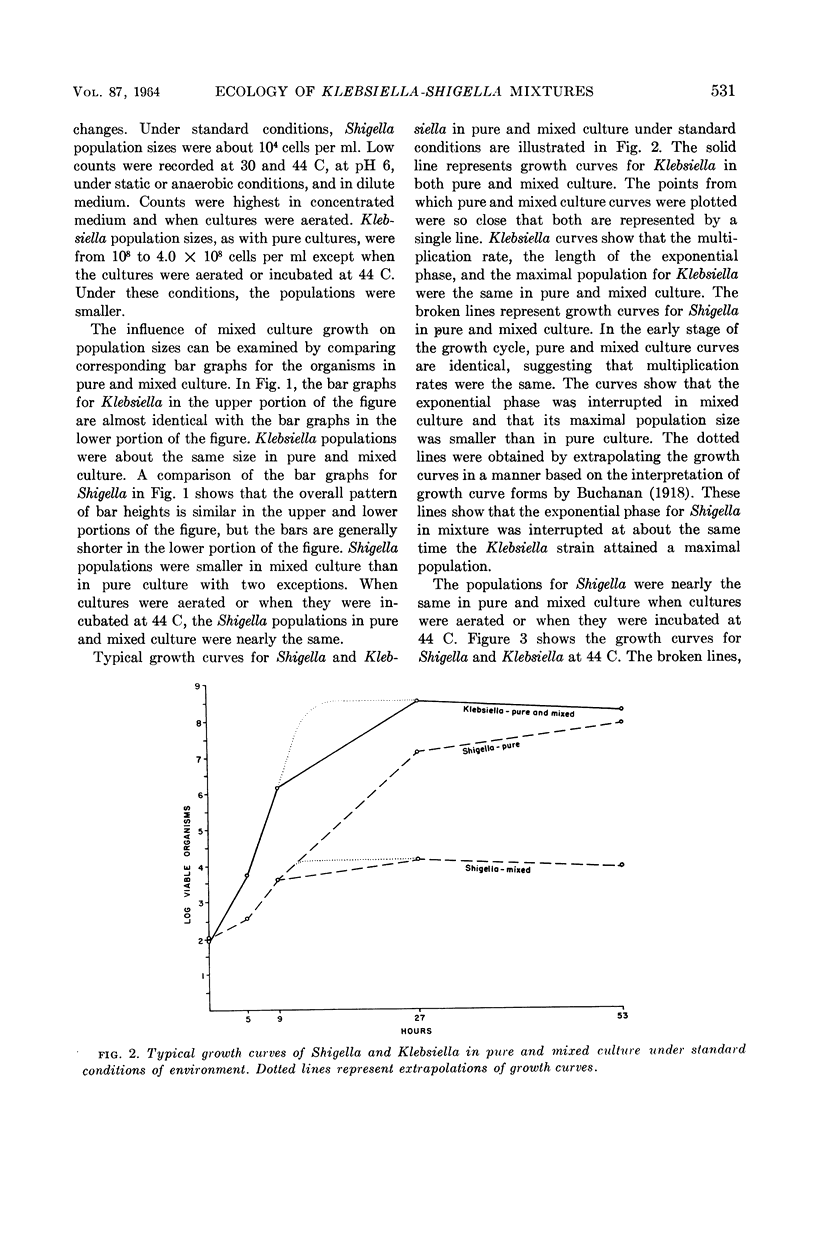
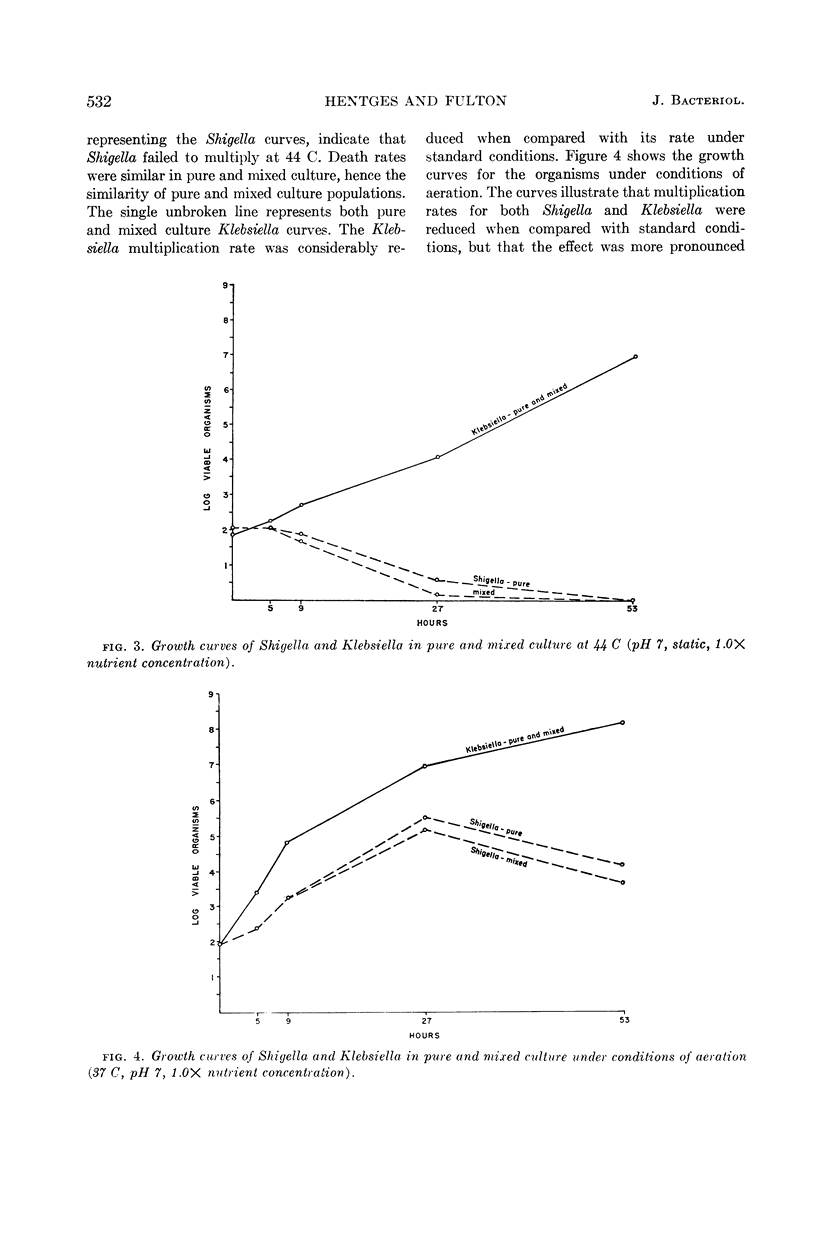
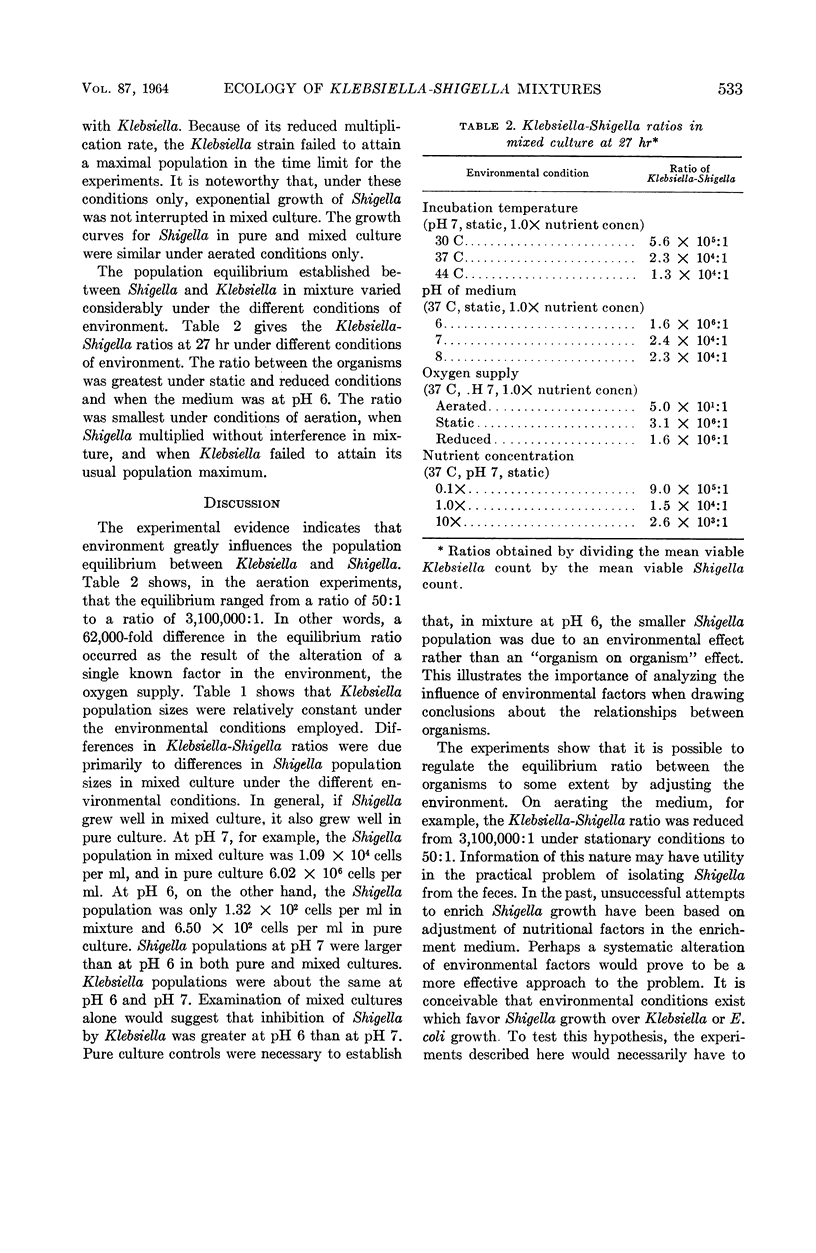
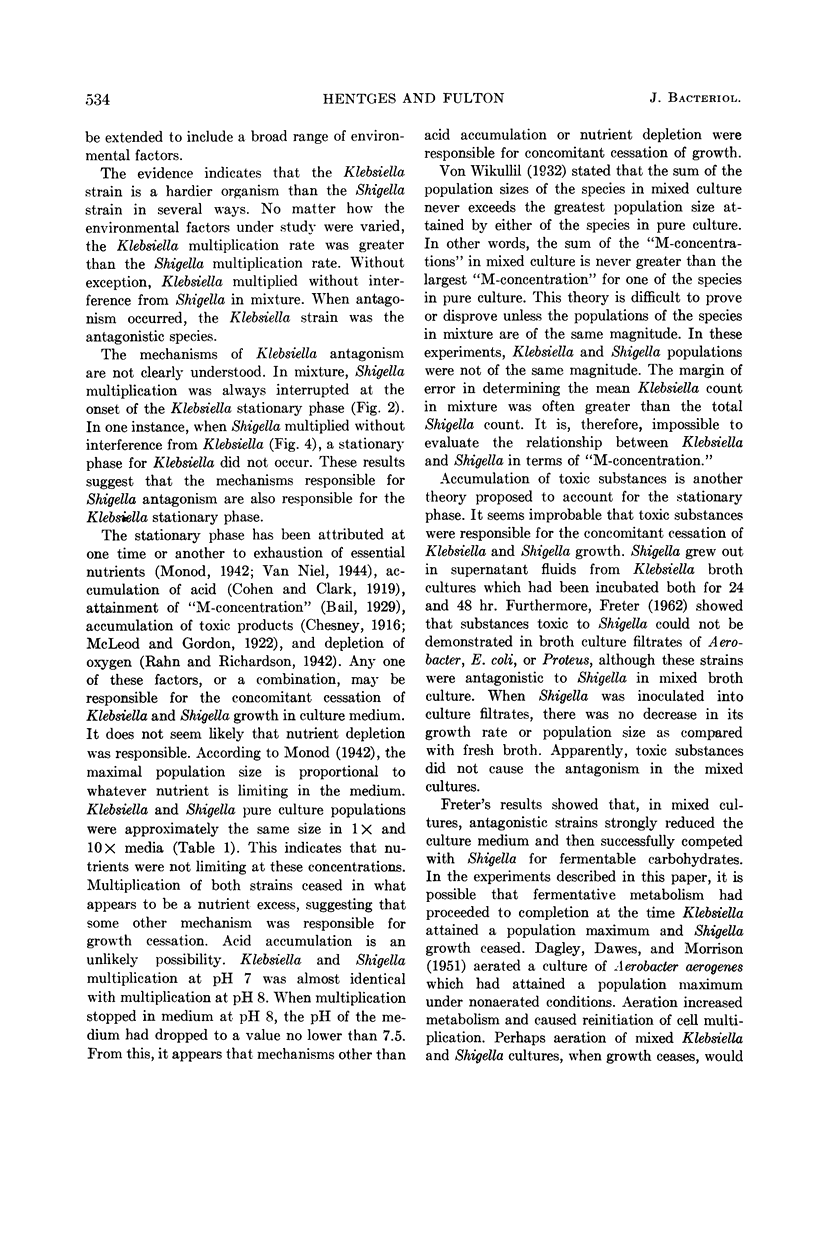
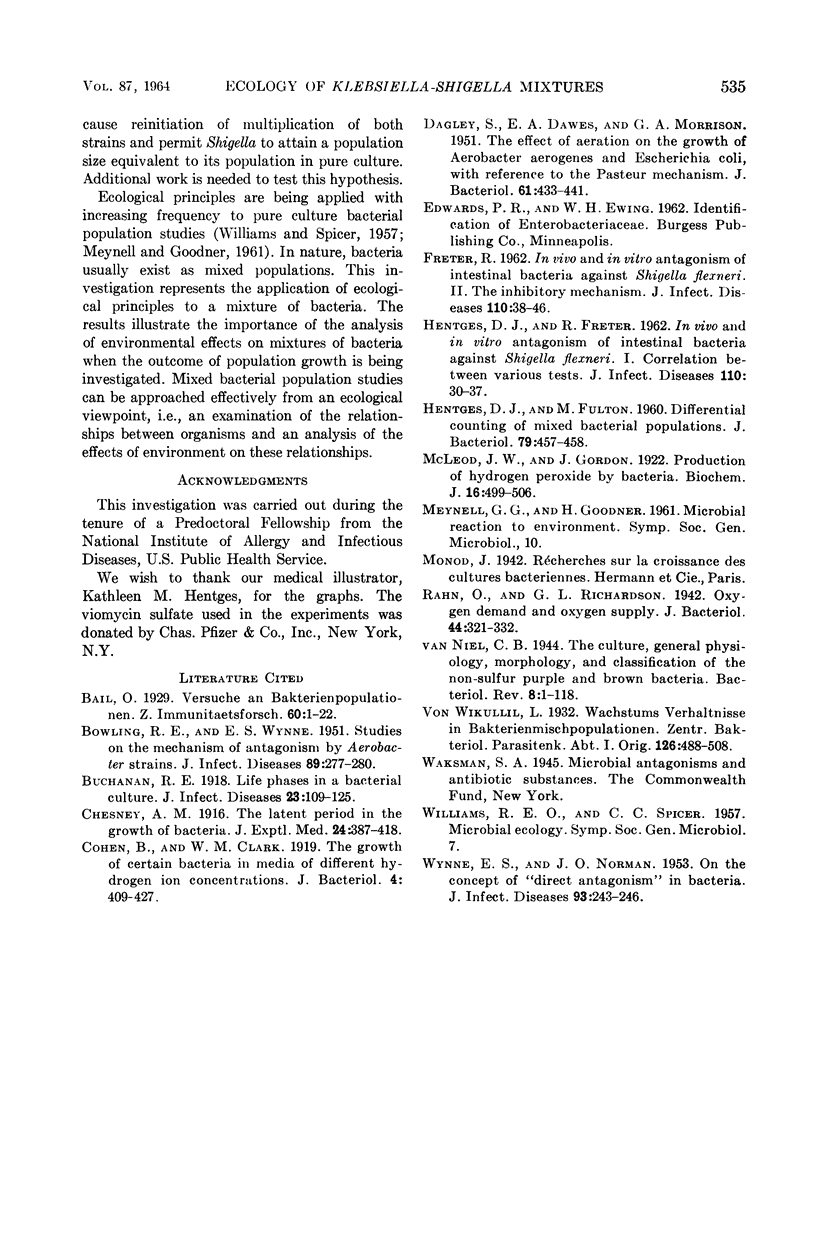
Selected References
These references are in PubMed. This may not be the complete list of references from this article.
- BOWLING R. W., WYNNE E. S. Studies on the mechanism of antagonism by Aerobacter strains. J Infect Dis. 1951 Nov-Dec;89(3):277–280. doi: 10.1093/infdis/89.3.277. [DOI] [PubMed] [Google Scholar]
- Cohen B., Clark W. M. The Growth of Certain Bacteria in Media of Different Hydrogen Ion Concentrations. J Bacteriol. 1919 Jul;4(4):409–427. doi: 10.1128/jb.4.4.409-427.1919. [DOI] [PMC free article] [PubMed] [Google Scholar]
- DAGLEY S., DAWES E. A., MORRISON G. A. The effect of aeration on the growth of Aerobacter aerogenes and Escherichia coli, with reference to the Pasteur mechanism. J Bacteriol. 1951 Apr;61(4):433–441. doi: 10.1128/jb.61.4.433-441.1951. [DOI] [PMC free article] [PubMed] [Google Scholar]
- FRETER R. In vivo and in vitro antagonism of intestinal bacteria against Shigellaflexneri. II. The inhibitory mechanism. J Infect Dis. 1962 Jan-Feb;110:38–46. doi: 10.1093/infdis/110.1.38. [DOI] [PubMed] [Google Scholar]
- HENTGES D. J., FRETER R. In vivo and in vitro antagonism of intestinal bacteria against Shigella flexneri. I. Correlation between various tests. J Infect Dis. 1962 Jan-Feb;110:30–37. doi: 10.1093/infdis/110.1.30. [DOI] [PubMed] [Google Scholar]
- Hentges D. J., Fulton M. DIFFERENTIAL COUNTING OF MIXED BACTERIAL POPULATIONS. J Bacteriol. 1960 Mar;79(3):457–458. doi: 10.1128/jb.79.3.457-458.1960. [DOI] [PMC free article] [PubMed] [Google Scholar]
- McLeod J. W., Gordon J. Production of Hydrogen Peroxide by Bacteria. Biochem J. 1922;16(4):499–506. doi: 10.1042/bj0160499. [DOI] [PMC free article] [PubMed] [Google Scholar]
- Rahn O., Richardson G. L. Oxygen Demand and Oxygen Supply. J Bacteriol. 1942 Sep;44(3):321–332. doi: 10.1128/jb.44.3.321-332.1942. [DOI] [PMC free article] [PubMed] [Google Scholar]
- WYNNE E. S., NORMAN J. O. On the concept of direct antagonism in bacteria. J Infect Dis. 1953 Nov-Dec;93(3):243–246. doi: 10.1093/infdis/93.3.243. [DOI] [PubMed] [Google Scholar]
- van Niel C. B. THE CULTURE, GENERAL PHYSIOLOGY, MORPHOLOGY, AND CLASSIFICATION OF THE NON-SULFUR PURPLE AND BROWN BACTERIA. Bacteriol Rev. 1944 Mar;8(1):1–118. doi: 10.1128/br.8.1.1-118.1944. [DOI] [PMC free article] [PubMed] [Google Scholar]


